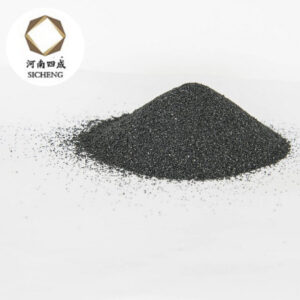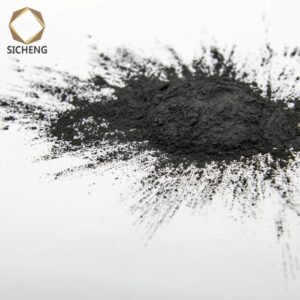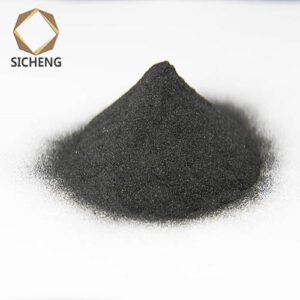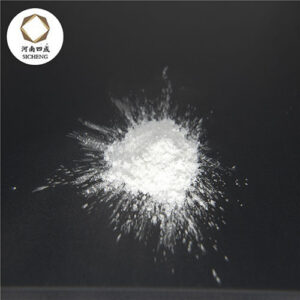Alumina powder is an indispensable and important material in modern industry. After the alumina powder is ultra-micronized, its surface electronic structure and crystal structure have changed, resulting in surface effects, small size effects, Quantum effects and macroscopic quantum tunneling effects, and have excellent characteristics such as high strength, high hardness, wear resistance, corrosion resistance, high temperature resistance, good insulation, and large surface area. Primary color phosphors, integrated circuit chips, and aviation light source devices have been widely used.
1. Ceramic materials and composite materials
Adding ultra-fine alumina powder to conventional ceramics can improve the toughness of ceramics and reduce the sintering temperature. Due to the superplasticity of ultra-fine alumina powder, it solves the limitation of low-temperature plastics on its application range. Therefore, it has been widely used in low temperature plastic ceramics.
The use of ultrafine alumina powder can also synthesize new composite ceramic materials and aluminum alloy ultrafine composite materials with special functions. Among them, the SiC-Al2O3 ultrafine composite material is more remarkable, its flexural strength is increased from 300-400MPa of single-phase silicon carbide ceramics to 1GPa, and the fracture toughness of the material is also increased by more than 40%.
Ultra-fine alumina can also be used as dispersion strengthening and additives. For example, ultra-fine alumina powder is used as metamorphic nucleation when casting cast iron grinding tools, and the wear resistance can be increased several times.
2. The material of the surface protection layer
is a new type of ultra-thin transparent material composed of ultrafine alumina particles. It is sprayed on the surface of metal, ceramics, plastic and hard alloy, which can improve the hardness, corrosion resistance and wear resistance of the surface. And it has anti-fouling, dust-proof, waterproof and other functions, which can solve the problems of easy-wear parts and easy-to-corrosion pipes in modern industrial production, which indirectly affect the service life of equipment and the precision of processed products. Therefore, it can be applied to the surface protection of machinery, knives, chemical pipelines, etc.
Among them, the ultra-fine alumina ceramic coating tool combines the advantages of ceramic materials and cemented carbide materials. While having similar strength and toughness to cemented carbide materials, the wear resistance is greatly improved, and can reach almost the same as that of uncoated tools. times to tens of times, and the processing efficiency is significantly improved.
3. Catalyst and its carrier
The pore size distribution of ultra-fine alumina is good, the pore volume is high, the surface area is as high as 60-400m2/g, and the surface atoms are incompletely coordinated, which leads to many mismatched bonds and oxygen bonds on the surface, and the surface smoothness decreases as the particle size decreases. Deterioration, forming uneven atomic steps, increasing the contact surface of chemical reactions, it is an ideal catalyst or catalyst carrier, the HDS activity of Co-Mo catalyst supported by ultrafine alumina particles is higher than that of Co-Mo supported by ordinary alumina HDS activity of the catalyst.
γ-Al2O3 is mainly used in catalyst and carrier, which is widely used in automobile exhaust purification, catalytic combustion, hydrodesulfurization, petroleum refining, polymer synthesis, etc.
4. Biological and medical materials
Ultra-fine alumina bioceramics basically do not corrode in the physiological environment, and have good structural compatibility. The new tissue grows into the interconnected pores on the surface of the porous ceramic, and the connection with the body tissue The bond strength is high, and it has the characteristics of high strength, small friction coefficient and low wear rate. Therefore, it is widely used clinically, and has been used to make force-bearing artificial bones, joint restorations, root implants, fracture splints and internal fixation devices, etc., and has also successfully carried out alveolar ridge expansion and maxillofacial bone defect reconstruction. , facial orthopedics and restoration, etc.
At present, the core research is being used for artificial trachea and other soft tissue materials, as well as bioceramic materials for simulating biological body functions and artificial intelligence.
5.Ultrafine alumina powder, a semiconductor material, has a large surface area and interface, and is very sensitive to moisture in the external environment. Changes in ambient temperature rapidly cause changes in the valence state of ions on the surface or interface and electron transport. In the range of 30-80% humidity, the AC impedance of ultra-fine alumina changes linearly, with fast response speed, high reliability, high sensitivity, long anti-aging life, anti-erosion and pollution of other gases, and can maintain in dusty and smoky environments. It is an ideal material for humidity sensors and humidity thermometers.
In addition, ultra-fine alumina is a commonly used substrate material, which has the advantages of good electrical insulation, chemical durability, heat resistance, high dielectric constant, flat and uniform surface, and low cost, and can be used in semiconductor devices and large-scale integration. Circuit substrate materials are widely used in microelectronics, electronics and information industries.
6. Optical materials
Nanoscale alumina can absorb ultraviolet light, and can generate light waves with wavelengths related to particle size under the excitation of certain wavelengths of light. It can be used as a protective coating film for the fluorescent powder layer in compact fluorescent lamps, and it can also be compounded with rare earth phosphors to make luminescent materials for fluorescent tubes to improve the life of the tubes.
The surface of alumina particles is coated with a layer of polymer that is harmless to the body and can also be added to sunscreen and cosmetics.
It is precisely because ultra-fine alumina powder has a series of excellent electrical, magnetic, optical, mechanical and chemical macroscopic properties compared with conventional particles, so in recent years, the preparation of high-purity ultra-fine alumina powder has become the main direction of research in the field of new materials. one.





